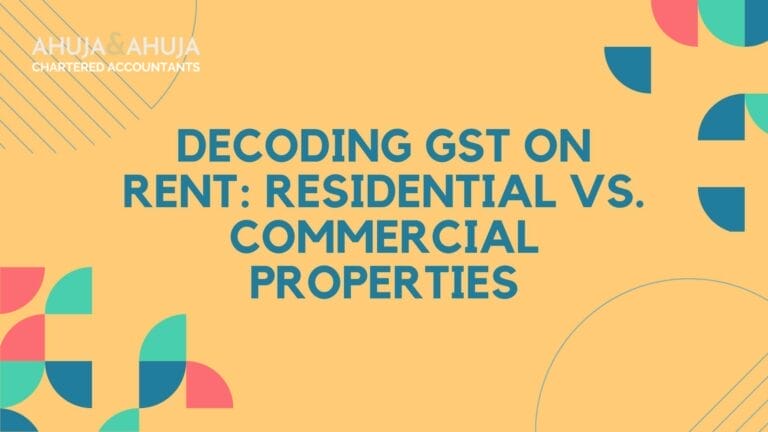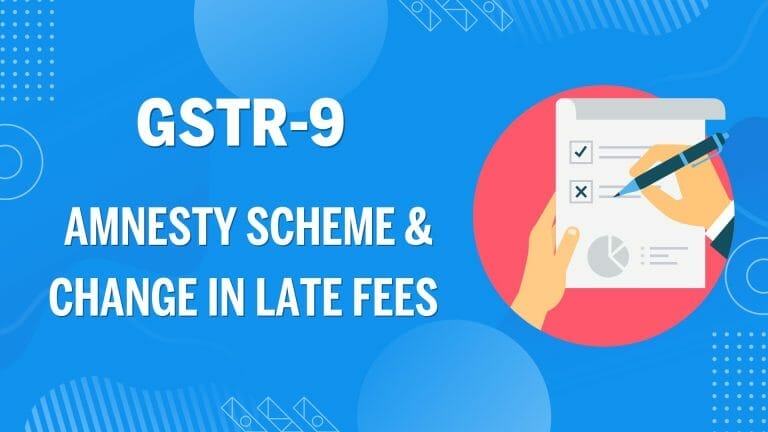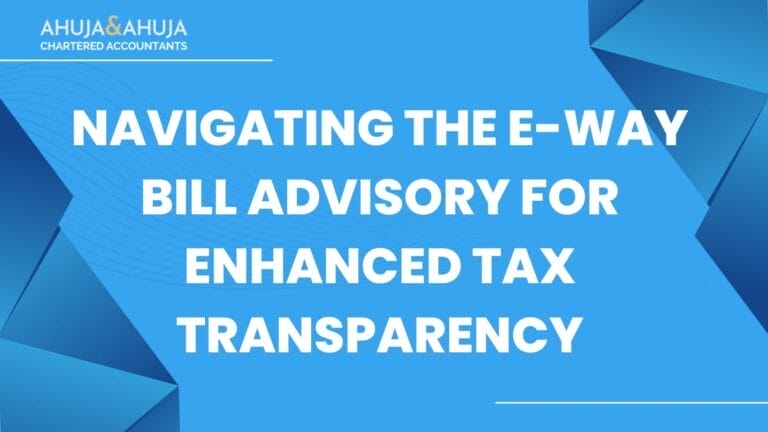How to Withdraw / Opt Out from GST Composition Scheme
The GST Composition Scheme – An Overview
Introduced under the Goods and Services Tax (GST) law, the GST Composition Scheme works as a simplified tax regime for small businesses. It’s valued for its straightforward and less-tax burden approach, making it an attractive option for businesses with a turnover of up to Rs. 1.5 crores annually. GST Registration Services
The key advantage of opting for this scheme is the lower compliance burden as compared to the regular GST regime. Participants are only expected to file quarterly returns instead of monthly, reducing paperwork and streamlining processes. Understandably, this scheme plays an instrumental role in aiding small-sized business players navigate the expansive ocean of tax compliance.
Businesses that are allowed to opt for the GST Composition Scheme are predominantly traders, restaurants, and small manufacturers. However, it’s pivotal to note that the scheme calculates the Rs. 1.5 crore limit by aggregating the turnover of all businesses registered under the same PAN. Additionally, this scheme does not extend to those providing services, with an exception to restaurant-related services.
Reference to this scheme and its benefits can be found in Section 10 of the CGST/SGST Act. For a further look into GST regulations and how the composition scheme fits into the picture, consider exploring our GST Services Overview.
The significance of this scheme runs deep, especially for businesses striving to manage their taxes effectively. However, circumstances crop up when withdrawal from this scheme might be necessary or advantageous. In the forthcoming sections, we will delve into the specifics of opting out from the GST Composition Scheme.
Stay tuned for our next update where we discuss the potential reasons that warrant the withdrawal from this favorable scheme. In anticipation, you might find our GST Checklist handy for your preparations.
Reasons for Withdrawing from the Composition Scheme
While the GST Composition Scheme offers several advantages, there are instances where businesses might find it necessary or beneficial to withdraw from the scheme. Here are the main reasons that could prompt a business to opt-out:
- Exceeding Threshold Limit: Under Section 10 of the CGST Act, businesses registered under the Composition Scheme must ensure that their annual turnover does not exceed Rs. 1.5 crores. If a business’s turnover crosses this threshold limit, it becomes ineligible to continue operating under the Composition Scheme. Switching to the regular GST scheme becomes mandatory in such cases.
- Supplying Restaurant Services: The Composition Scheme permits businesses engaged in supplying restaurant services to avail of its benefits. However, if a business begins offering restaurant services other than those specified under clause (b) of para 6 of Schedule II of the GST Act, it will no longer be eligible to continue under the Composition Scheme. Instead, they will have to switch to the regular scheme.
- Supply of Exempt Goods/Services: In some cases, businesses may start supplying goods and/or services that become exempt from GST. When the goods or services a business supplies are removed from the taxable category and classified as exempt, they can no longer continue under the Composition Scheme. Switching to the regular scheme becomes necessary to comply with the revised tax regulations.
- Supplying Goods through E-Commerce Operator: If a business begins selling goods through an E-Commerce Operator, it becomes ineligible to continue under the Composition Scheme. The regular GST scheme is mandatory in such cases.
- Manufacturing Notified Goods: Businesses engaged in the manufacturing of goods that have been notified, such as Pan Masala, are not allowed to operate under the Composition Scheme. To comply with tax regulations, they must switch to the regular scheme.
- Other Reasons: There might be additional circumstances where a business decides to withdraw from the Composition Scheme due to its specific needs or changes in operations. Each case will have its own unique factors that lead to the opt-out decision.
It’s important to note that the withdrawal from the Composition Scheme can either be voluntary or mandatory, depending on the reasons stated above. In both cases, businesses need to follow the prescribed procedure to ensure a smooth transition. We will discuss the withdrawal process in detail in the subsequent sections.
The Process of Withdrawing from the Composition Scheme
If a business decides to withdraw from the GST Composition Scheme, there is a specific process to be followed. The following steps outline the withdrawal procedure:
- Filling Form GST CMP-04: To initiate the withdrawal process, businesses are required to fill out Form GST CMP-04. This form serves as an application to withdraw from the Composition Scheme. It must be filed within 7 days from the date when the taxpayer fails to meet any condition of Section 10 of the CGST/SGST Act or the rules made thereunder.
- Choosing Withdrawal Reason and Date: While filling out Form GST CMP-04, businesses need to specify the reason for the withdrawal. They can select from the reasons mentioned earlier in this article. Additionally, businesses need to indicate the effective date from which the withdrawal from the Composition Scheme is sought. It’s important to note that the withdrawal date cannot be a future date and should not be prior to the “Effective date of composition levy.”
- Digital Signature or EVC Authentication: The application for withdrawal from the Composition Scheme can be signed using a Digital Signature Certificate (DSC) or authenticated using an Electronic Verification Code (EVC).
- Filing Form GST ITC-01: After filing the application to withdraw from the Composition Scheme, businesses are required to file a statement in Form GST ITC-01. This form contains the details of the stock of inputs and inputs contained in semi-finished or finished goods held by the business on the date when the option is withdrawn or denied. The filing of Form GST ITC-01 is mandatory within a period of thirty days from the date of withdrawal of the option.
It’s important to remember that businesses opting to switch to the regular GST scheme are required to provide a stock statement in Form GST ITC-01. This allows them to claim the input tax credit on their stock of inputs, semi-finished, or finished goods, and capital goods when they become a regular dealer.
Please note that failing to comply with the withdrawal process or missing the specified filing deadlines may result in penalties or legal consequences. To ensure a smooth transition and avoid any potential issues, businesses are advised to seek professional advice or refer to the relevant official resources.
Switching to the Regular Scheme and Implications
When a business decides to withdraw from the GST Composition Scheme and switch to the regular scheme, there are certain implications and requirements to be aware of. Here is an overview of the process:
- Filling Form GST CMP-04: As mentioned earlier, businesses need to fill out Form GST CMP-04 to initiate the withdrawal from the Composition Scheme. This form serves as an intimation to the tax authorities about the decision to switch to the regular scheme. It must be submitted within the specified timeframe, i.e., within 7 days from the date when the taxpayer becomes eligible to register as a regular dealer.
- Stock Statement in Form GST ITC-01: Along with Form GST CMP-04, businesses need to provide a stock statement in Form GST ITC-01. This statement should include details of the stock of inputs, semi-finished, or finished goods held by the business on the day before becoming liable to be a regular dealer. The purpose of this statement is to enable businesses to claim input tax credit on their existing stock of inputs, semi-finished, or finished goods, and capital goods when they transition to the regular scheme. Form GST ITC-01 must be filed within 30 days of filing Form GST CMP-04.
- Payment of Input Tax Credit: When switching from the Composition Scheme to the regular scheme, businesses may be required to pay an amount equal to the credit of input tax. This payment is made by debiting the electronic credit or cash ledger. It applies to the inputs held in stock on the day immediately preceding the date of switch over to the regular scheme. The specific amount and procedure may vary based on applicable rules and regulations.
It’s important for businesses to carefully follow the prescribed procedures and timelines to ensure a seamless transition from the Composition Scheme to the regular scheme. Non-compliance or missed deadlines can lead to penalties and other legal consequences.
Frequently Asked Questions (FAQs) – Withdrawing from the Composition Scheme
Here are some common questions that businesses often have regarding the withdrawal or opting out from the GST Composition Scheme:
Can I voluntarily withdraw from the Composition Scheme?
Yes, businesses can voluntarily choose to withdraw from the Composition Scheme by filing an application. The Form GST CMP-04 is used for this purpose. However, businesses must ensure compliance with the specified conditions and timelines.
What is the deadline for filing the application to withdraw from the Composition Scheme?
The application to withdraw from the Composition Scheme using Form GST CMP-04 must be filed within 7 days from the date when the taxpayer fails to satisfy any condition of Section 10 of the CGST/SGST Act or related rules.
Can I choose the withdrawal date myself?
The withdrawal date can vary depending on the reason for withdrawal. If the reason is voluntary, the date from which withdrawal is sought cannot be a previous date, but it can be the current or future dates. However, if the reason for withdrawal is other than voluntary, the date cannot be a future date or prior to the “Effective date of composition levy.”
What is the requirement for filing Form GST ITC-01?
After filing the application to withdraw from the Composition Scheme, businesses must file Form GST ITC-01. This form should include details of the stock of inputs and inputs contained in semi-finished or finished goods held in stock on the date when the option is withdrawn or denied. The filing of Form GST ITC-01 is mandatory within a period of thirty days from the date of withdrawal of the option.
What happens if I fail to comply with the withdrawal process or miss the filing deadlines?
Non-compliance with the withdrawal process or missing the specified timelines can result in penalties or legal consequences. Therefore, it is crucial to ensure timely and accurate filing of the necessary forms and statements.
It is important to note that the answers provided above are meant to serve as general guidance. For specific queries or clarifications, businesses are advised to consult with tax professionals or refer to official resources.
That concludes our article on how to withdraw/opt-out from the GST Composition Scheme. We have covered the background information, reasons for withdrawal, the process of withdrawing, implications of switching to the regular scheme, and frequently asked questions.
We hope this article has provided you with a clear understanding of the withdrawal process. Should you have any further questions or need additional assistance, feel free to reach out to us or consult with a tax professional.
Disclaimer
The materials provided herein are solely for educational and informational purposes. No attorney/professional-client relationship is created when you access or use the site or the materials. The information presented on this site does not constitute legal or professional advice and should not be relied upon for such purposes or used as a substitute for professional or legal advice.








Hello Sir,
I want to convert from COMPOSITION TO REGULAR SCHEME IN GST, from 01.04.2024
(For F. Y. 2024-25).
I am trying (trying since 01
.04.2024) to do so on GST Portal through CMP-04, from 01.04.2024, but site is showing error as ” WITHDRAWAL FROM COMPOSITION LEVY DATE CANNOT BE BEFORE OPT FOR COMPOSITION LEVY DATE “.
Can you please explain what is the exact problem ? And please provide solution for this.
Thank You in Advance ?.
Please contact us through our contact us page with detailed information about your problem